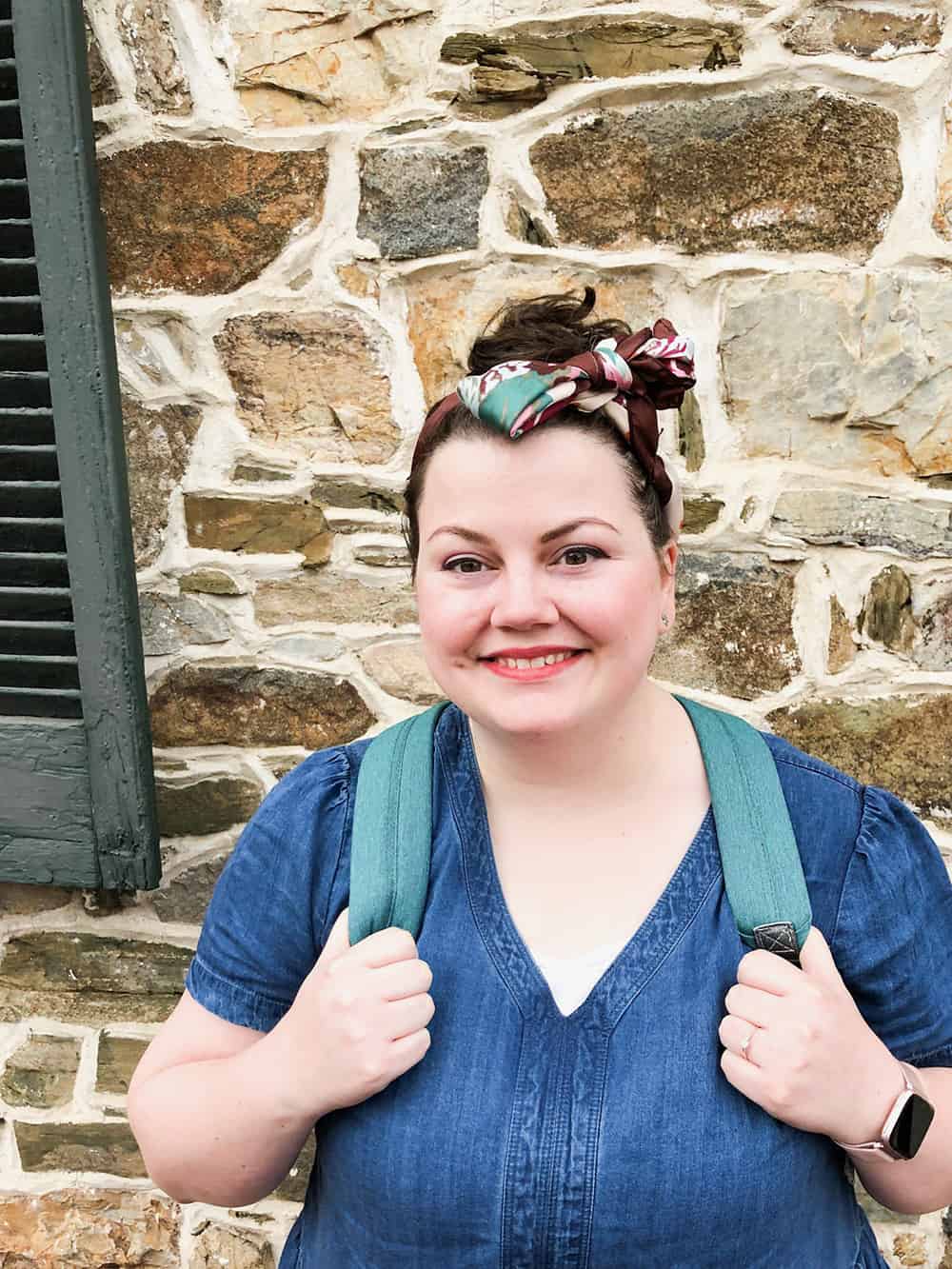In 2015, I heard about a motive based test called the enneagram. I love all things personality and I quickly had my husband take the test as well. I’ve found that is a lot more of a journey than I realized. There have been times I have questioned my time and other times where my type seems very loud and clear.
In this post, I’ll give some resources on helping you find your type + share my enneagram journey as well. Affiliate links are used in this post.

WHAT IS THE ENNEAGRAM?
Each person has one number that is a way that person views the world- the enneagram helps you find that and do some self-growth by giving you tools to help you progress. I like the way this website describes the enneagram best because it goes through:
- Your Basic Personality Type
- The Centers
- The Wing
- The Levels of Development
- Directions of Integration (Growth) and Disintegration (Stress)
- The Three Instincts
- Typing Yourself and Others
While I initially typed myself correctly, I realize now that I didn’t understand a lot about the enneagram and how it worked. I still see many common errors. For example, people will say they are multiple types off of the enneagram (this isn’t the way it works).

WHAT I WANT YOU TO KNOW ABOUT THE ENNEAGRAM
I’ve seen people create biases on numbers which makes it harder to identify themselves, but this is different. Since this is a motive based test, it is not as “positive” as a personality test. There will be both positive and negative traits associated with each enneagram type. I remember the first time I took a test, I felt overwhelmed and very vulnerably seen.
That being said, don’t be discouraged if takes you a while to discover your type, I easily identify myself in three different types. However, I am still only one type. It can be easy to begin comparing the enneagram to MBTI personality tests or other things, but I prefer to not go down that rabbit hole because it makes my life easier. However, the enneagram doesn’t give you an excuse to not take care of yourself or be an emotionally unhealthy person.
WANT TO LEARN ABOUT YOUR ENNEAGRAM NUMBER?
- I recommend the book The Modern Enneagram: Discover Who You Are and Who You Can Be. I’ve seen a lot of people piece the enneagram together in a very odd and haphazard way. Reading a book was essential for me because it is truly a fascinating system!
- I listened to “The Enneagram” podcast episode by The Liturgists.
- I recommend this post by Rachel A. Dawson with different books and resources she has found about the enneagram.
- Last but not least, if you’re itching to take an enneagram test, you can take one here.
RELATED // let’s get to know each other
MY ENNEAGRAM JOURNEY
I decided I was an enneagram 4 very quickly. However, a common joke in the system is that means you probably aren’t one.
Since the enneagram is based on a many things, childhood wounding being one of them, it has been eye opening as I’ve worked through things how I’ve thought I might be a different type.
When I was pregnant, I began questioning what type I was again. I had horrible morning sickness and I began devouring articles, books, and listening to podcasts about the enneagram. Additionally, I began doing a therapy technique with my cousin who is also obsessed with the enneagram. We’ve had a lot of enneagram conversations; she was really kind and just mentioned some obvious traits that I had and let me figure it out on my own which is extremely kind. I think personal “revelations” are usually better found with this type of thing.
I struggled with my number still.
There were moments when I was reading The Modern Enneagram: Discover Who You Are and Who You Can Be and I kept thinking “oh, I don’t relate to my original number as much as I thought I would.” I found I related to a lot of other numbers. Other times reading reading the same book, I would think “I’m not ___ enough to be this number.” I think people often make themselves try to fit into a box so much that everything goes over their head and I have fallen into this with the enneagram; while you have a core enneagram number, you’re still someone outside of the number.
Shortly after we moved to Virginia, I felt so much of my optimism and joy for life returning. I realized It had been hard to see myself in any of the numbers because my life was being lived at such extremes. I had easily identified as 4 because my experience there had been so emotional.
I experienced a lot of trauma in Georgia. Georgia was a huge learning ground and battlefield for my mental health. I’m grateful for what I learned, but I wouldn’t want to repeat those experiences. Being able to start over in northern Virginia, but also have the promise of a job for my husband that will allow him to be home breathed new vitality and hope into me.
Surely but truly, I realized the old Autumn was coming back. I had missed myself. Instead of only seeing myself in black and white, I saw a spectrum of colors in myself again.
I spent less time in my feelings and more time getting things done and learning. Here I was again, the Autumn that wasn’t living from counseling session to counseling session. The Autumn that enjoyed talking to people at church instead of running out after the closing hymn to avoid the anxiety of feeling shunned at church. The Autumn that wasn’t triggered over everything.
Even with all of my medical issues and chronic pain, I’ve been happier here. It is hard to identify yourself clearly and feel confident about it when you don’t feel like your experience represents who you are to the core.
All I have to say is, it was time. I realized I was able to accept myself better because my surroundings were more conducive to healing.
RELATED // what I’ve learned from two years of counseling

HEALING WITH THE ENNEAGRAM
In the hours I’ve had rocking a baby during the day and night, I had a lot of quiet time with my hands full.
In general, I realized a big theme in my thinking was that I wanted her to be able to be her own little person someday. I decided that I wanted to help her be her best self and my job as a parent was to help her be her own individual. For me, this was a huge light bulb moment that a 4 was probably in my number process, whether as my main one or as a wing.
In the time I had for self-reflection, I thought about different feedback over the years and about what my best version of myself truly was. I realized being an individual, seeing beauty in the world, and deep reflection are all big parts of my identity.
As I began to look at different enneagram subtypes, I realized I am a enneagram 4 social preservation type. This is a type that is often considered a “counter” of that type. Instead of me focusing on a deep sense of sadness or melancholy that 4s often identify with, I tend to try to seek out happy experiences.
RELATED // it is okay to share your highs and lows

WHAT IS AN ENNEAGRAM 4 LIKE?
The enneagram is pretty complex, but out of the online resources I’ve gathered, I really like what the Enneagram Institute has to say.
Fours are self-aware, sensitive, and reserved. They are emotionally honest, creative, and personal, but can also be moody and self-conscious. Withholding themselves from others due to feeling vulnerable and defective, they can also feel disdainful and exempt from ordinary ways of living. They typically have problems with melancholy, self-indulgence, and self-pity. At their Best: inspired and highly creative, they are able to renew themselves and transform their experiences.
Something I love about the enneagram is it shows how our motives look on a spectrum of health, for example, a healthy enneagram 4 would look different than an unhealthy enneagram 4. Because of this, each enneagram type has tips on how they can have personal growth. Each enneagram number also has a different look based on their instinctual stacking.
For example, as an enneagram 4 with a dominant social preservation stacking, I thought I looked like a 7 sometimes.
WHAT DO I LIKE + DISLIKE ABOUT BEING AN ENNEAGRAM 4?
Normally, I love learning, observing, and figuring out more about the world. However, seeing that my main number and wing number are in the heart and head triad, I can often be very disconnected from my body. As a 4w5, I am a double withdrawn type (4s, 5s, and 9s are all within this triad).
As a 4w5, I can have a lot of anxiety and still care about my aesthetic experience a lot. For example: when dressing my child, I think a lot about her personality and what I think represents her (she is bubbly and outgoing, I always end up dressing her in brighter clothing). I love being able to decorate my home in ways that make me feel like me. Being able to dress myself and my home as a reflection of myself are important to me.
In times of stress, I am overwhelmed with how much I end up researching. I can become obsessive… . It is easy for me to get stuck in my head and feel depressed over situations. I ruminate and it is easy for me to brood + wonder how I could have done something differently.
I end up getting disconnected from my body in ways like: why am I having a panic attack? When I review my experiences and things building up, it is super obvious. This is something has come up a lot in therapy because I over-intellectualize my emotions. It is easy for me to disconnect from myself and my experiences and hide away. I care about privacy sometimes past the point that makes it easy to connect with people.
In times of growth, I move towards being more assertive and getting stuff done, instead of just living in my head and being concerned about about my individuality. Instead of just researching and learning about theoretical things, I apply them to causes and things I feel passionate about. This has been a driving force behind why I became a special education teacher and an ESL teacher.
When I’m doing well, I keep a great routine that allows me both time to thrive as an individual as well as help outside of myself.


